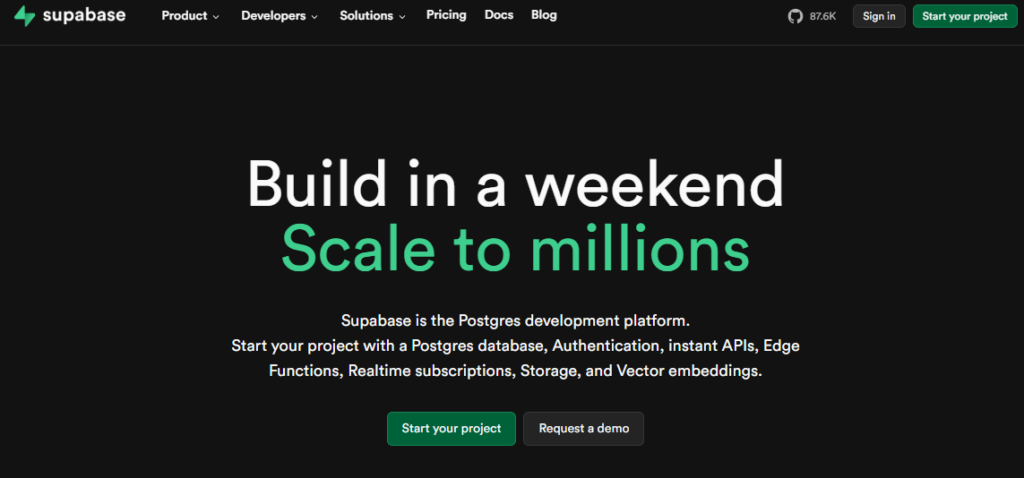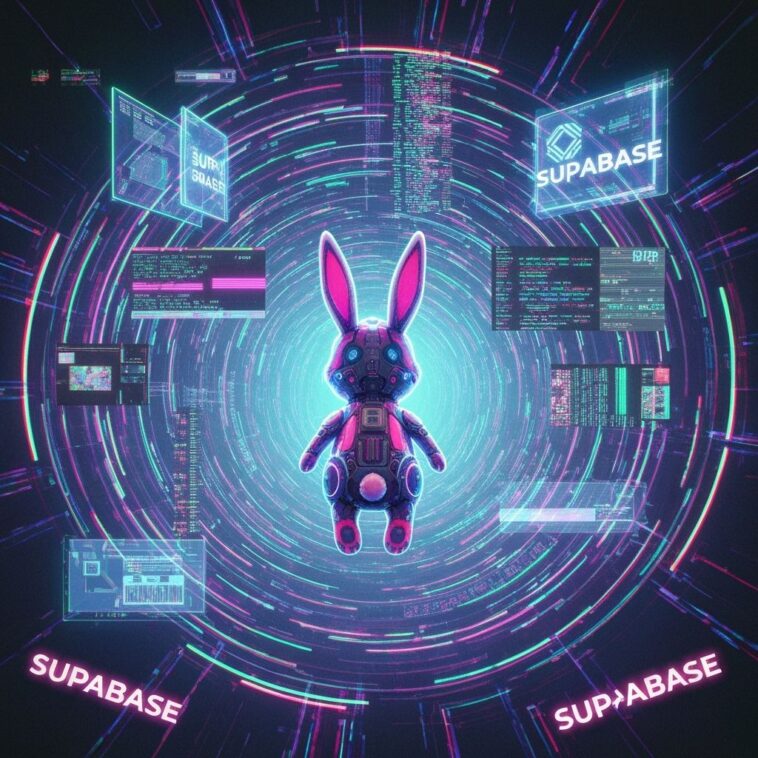Alice had always thought databases were about storing data securely and efficiently. But as she tumbled down the rabbit hole of modern web development, she discovered a wonderland where databases are chosen not for their security features or performance benchmarks, but for their “vibes”—and in this topsy-turvy world, nothing made sense anymore.
Welcome to the realm of the vibecoders, where Supabase reigns supreme not because of its robust security architecture or time-tested reliability, but because it feels just right. In this curious landscape, traditional database vendors watch from the sidelines like the Mad Hatter at a very serious tea party, wondering if they’ve all gone completely mad.
The Curious Case of the Vibecoders

In the beginning, there were database administrators who understood concepts like ACID compliance, normalization, and security hardening. They wore pocket protectors, not ironically, and could recite SQL injection prevention techniques in their sleep. But then came the vibecoders—a new species of developer who approaches technology selection with the same methodology one might use to choose a Starbucks latte flavor.
“Why should I spend weeks learning about database security when this one has such a clean dashboard?” asks Jason, a full-stack developer whose LinkedIn bio lists “Vibe Curator” as his primary skill. “Supabase just feels more authentic than PostgreSQL. Like, when I look at their landing page, I can practically taste the avocado toast.”
The vibecoders have fundamentally reimagined the database selection process. Traditional criteria like “Does it prevent SQL injection?” have been replaced with more pressing questions: “Does the logo use gradients?” “Are the docs written in a casual, friendly tone?” “Would this database fit the aesthetic of my portfolio site?”
The Wonderland of Supabase
In this new world order, Supabase has emerged as the Cheshire Cat of databases—appearing everywhere with a grin, promising magical solutions while leaving crucial security details mysteriously absent. Its popularity among vibecoders stems not from its technical merits, but from its mastery of what industry insiders call “Developer Experience Aesthetics.”
Supabase’s marketing genius lies in understanding that modern developers don’t want to learn about database internals—they want to feel like they’re using the database equivalent of a trendy coffee shop. The documentation reads like lifestyle content, complete with perfect syntax highlighting and just enough emoji usage to feel approachable without being unprofessional.
“Traditional databases make me feel like I’m wearing a suit to a startup,” explains Madison, whose GitHub bio lists her as a “Full-Stack Artist.” “Supabase gets it. It’s like the difference between shopping at Best Buy and shopping at Apple. Same function, completely different vibe.”
The security vulnerabilities that plague Supabase—and there are many—are treated by vibecoders as charming personality quirks rather than fundamental flaws. When a security researcher published a detailed analysis of Supabase’s authentication bypass vulnerabilities, the vibecoder community’s response was swift and decisive: they updated their Twitter bios to include “Security-Curious” and continued building.
The Mad Hatter’s Tea Party of Traditional Databases
Meanwhile, the traditional database vendors sit in their boardrooms like characters from a Lewis Carroll fever dream, trying to understand this new market reality. Oracle, Microsoft SQL Server, and IBM DB2 find themselves in the position of the Queen of Hearts, shouting “Off with their heads!” at security vulnerabilities that vibecoders simply shrug off.
“We’ve spent decades perfecting enterprise-grade security,” explains a senior product manager at a major database company who asked to remain anonymous. “We have compliance certifications that took years to obtain, security features that have been battle-tested by Fortune 500 companies, and documentation that could stop a freight train. And we’re losing market share to a database that prioritizes color schemes over encryption!”
These traditional vendors face a peculiar dilemma. They could easily create vibecoder-friendly versions of their products—add some gradients, rewrite their documentation in a more casual tone, maybe throw in a few inspirational quotes about “building the future.” But doing so would feel like the Dormouse agreeing to perpetual tea time just to fit in.
“Should we rebrand PostgreSQL as ‘PostgresQL: The Vibe Database’?” wonders another industry veteran. “Should we hire influencers to create TikTok videos about transaction isolation levels? Where does it end?”
The Education Problem That Isn’t Really a Problem
The most bewildering aspect of the vibecoders phenomenon is their relationship with learning. Traditional developers progressed through a predictable journey: they started with basic concepts, gradually learned about database normalization, understood the importance of proper indexing, and eventually grasped why security matters. Vibecoders have revolutionized this process by skipping directly to the “shipping code” phase.
“Why would I waste time learning about SQL injection when Supabase handles all that backend stuff for me?” asks Tyler, whose startup just raised $2 million based on a MVP built entirely on vibes. “I’d rather focus on user experience and making sure my app feels magical.”
When pressed about the security vulnerabilities in his application, Tyler’s response embodied the vibecoder philosophy: “Security is important, but so is velocity. And honestly, if someone wants to hack my app badly enough to exploit database vulnerabilities, that’s kind of flattering. It means we’re successful enough to be worth targeting.”
This approach to security education resembles the Mad Hatter’s approach to time—it exists in theory, but practical application seems perpetually postponed. Vibecoders operate under the assumption that security is like vegetables: probably important for health, but not immediately gratifying.
The Rabbit Hole Deepens
As Alice ventured deeper into this database wonderland, she encountered increasingly surreal scenarios. Startups were choosing databases based on how well their logos matched their brand colors. Developers were debugging authentication issues by consulting design blogs instead of security documentation. Database migrations were being planned around Mercury retrograde.
“We’re disrupting the entire concept of technical decision-making,” explains the founder of a Y Combinator startup that helps companies choose databases through personality quizzes. “Why should database selection be limited to boring metrics like performance and security when we could consider the full emotional journey of the developer experience?”
The startup’s proprietary algorithm asks potential users questions like “If your database were a character from The Office, who would it be?” and “On a scale of 1 to 10, how much do you trust databases that use serif fonts in their logos?” Based on these responses, it recommends the database that best aligns with the user’s “technical personality.”
The Traditional Vendors’ Dilemma
Back in the real world, traditional database companies are grappling with an unprecedented challenge: how do you market security and reliability to a generation that considers those features less important than aesthetic appeal? It’s like trying to sell nutritional supplements to people who only eat food that photographs well.
Some companies have attempted to bridge this gap by hiring “Developer Advocacy Influencers”—a job title that would have seemed like satire just five years ago. These individuals spend their days creating content that makes enterprise database features seem approachable and Instagram-worthy.
“We’re basically trying to make ACID compliance sound sexy,” admits one such advocate. “Yesterday I spent four hours creating a TikTok video about database normalization forms set to trending audio. The comments were… not encouraging.”
The Future of Database Selection
As this wonderland continues to evolve, one can only imagine where it leads. Perhaps we’ll see the rise of databases that change their color schemes based on the time of day, or authentication systems that use personality types instead of passwords. Maybe database administrators will be replaced by “Data Vibe Consultants” who choose storage solutions based on astrological compatibility.
The vibecoders have fundamentally altered the technology landscape by proving that technical merit is optional if the marketing is sufficiently aesthetic. They’ve created a world where security vulnerabilities are treated as character development opportunities and where the phrase “it just works” has been replaced with “it just feels right.”
In this new reality, Supabase isn’t winning because it’s the best database—it’s winning because it’s the most photographable database. And in a world where technical decisions are increasingly made on Instagram Stories rather than in engineering meetings, perhaps that’s exactly what the market demanded.
What’s your take on the rise of vibecoders—are we witnessing a natural evolution in developer priorities, or have we collectively lost our minds? Have you ever chosen a database based on how its documentation made you feel? And seriously, when did “it has good vibes” become acceptable technical criteria for enterprise software selection?





GIPHY App Key not set. Please check settings